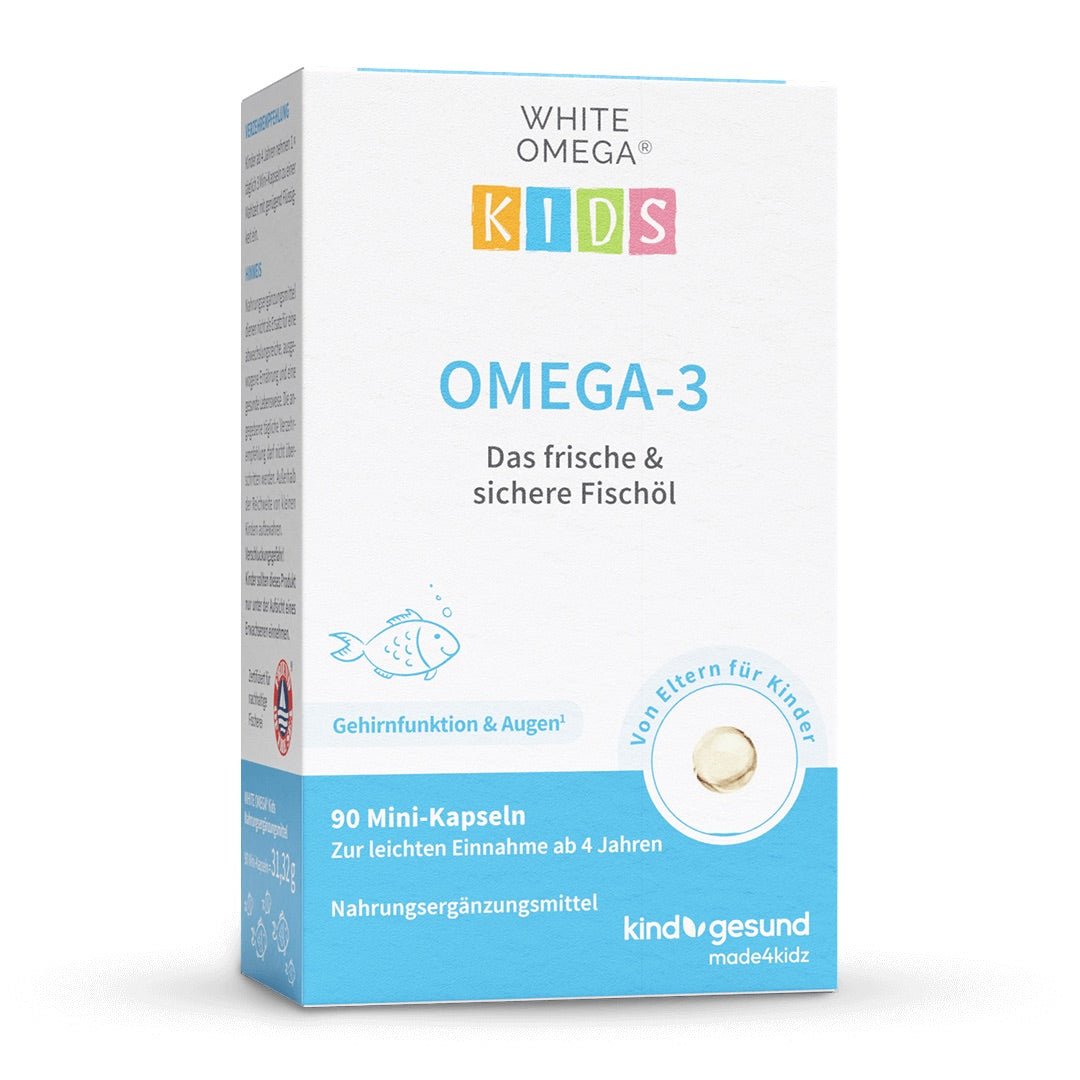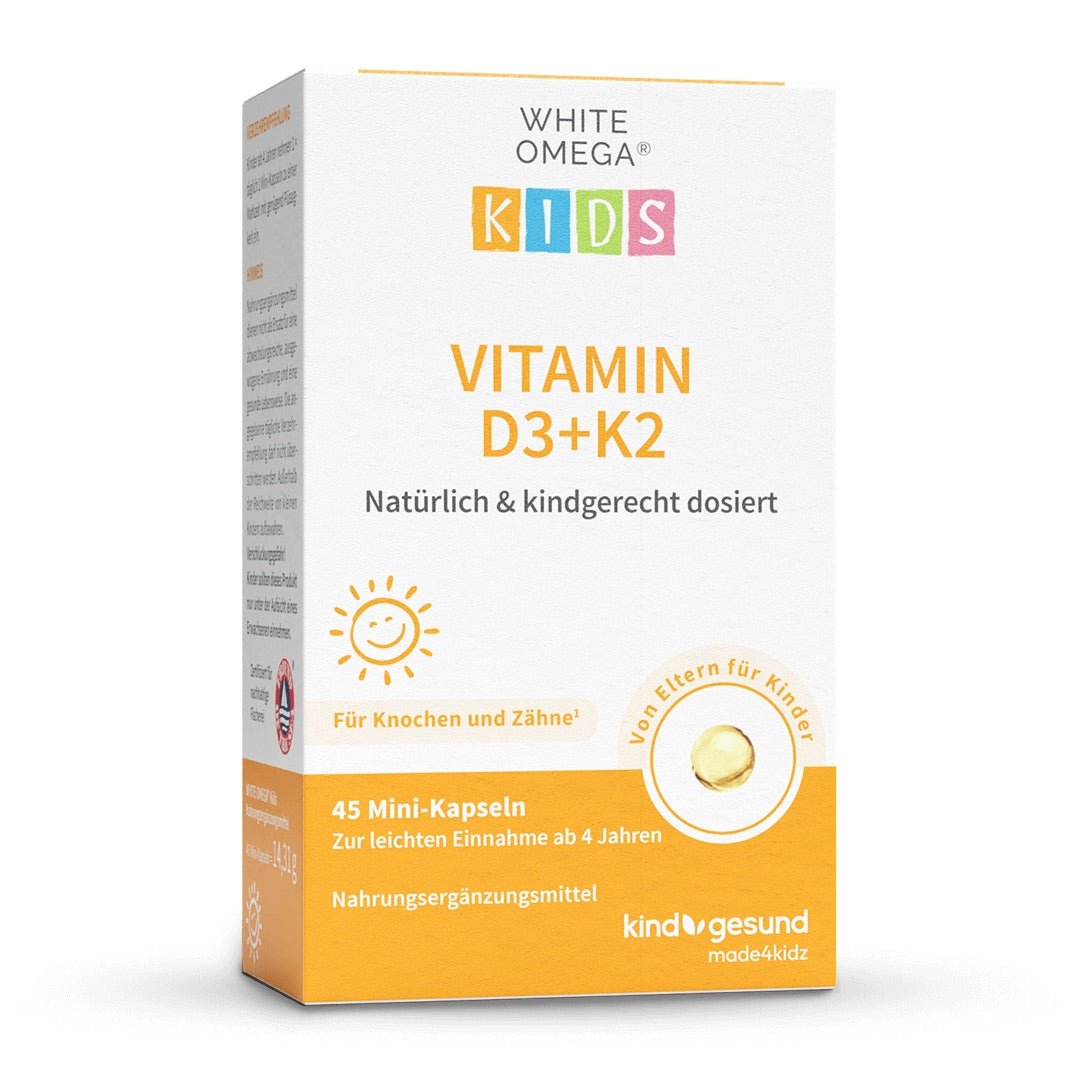
As a parent, you want only the best for your child— strong teeth, healthy bones, and a strong immune system. Vitamin D3, in conjunction with vitamin K2, plays a crucial role in this. But how do you ensure your child is getting enough? And when might it be beneficial to supplement with vitamin D? In this article, you'll learn what you should pay attention to in order to best support your child's health.

Why do children need vitamin D?
Vitamin D is not actually a traditional vitamin, but rather has hormone-like properties. One of its most important functions is the regulation of calcium-phosphate metabolism . In combination with vitamin K2, it supports the incorporation of calcium into the bones, which is crucial for bone health and strong teeth . These vitamins also play a key role in the immune system and muscle strength. Adequate calcium and vitamin D intake is particularly crucial for children and adolescents during their growth phase, as this is when bone formation takes place.
Why is vitamin D lacking in winter?
The body produces 80 to 90 percent of the vitamin D it needs through the skin itself – with the help of UVB rays. This works well in summer, but in autumn and winter, sunlight is often too weak in our latitudes. One clue: When the shadow is longer than the body, the skin produces hardly any vitamin D. However, the body stores it in fat and muscle tissue and uses it up in winter. Vitamin D can also be absorbed through food, but only in very small amounts. It is found in fatty sea fish, mushrooms, milk, eggs, and liver.


How much vitamin D do children need?
Depending on their age, children need different amounts of vitamin D to develop healthily.
According to the German Nutrition Society (DGE), the recommended daily vitamin D intake is 400–800 IU (international units) for infants up to one year of age. For toddlers and children one year and older, the DGE recommends a daily intake of 600–800 IU to support bone health and the immune system.
How do you detect a vitamin D deficiency in children?
A vitamin D deficiency in children can manifest itself through various symptoms, which often begin subtly. Common signs include fatigue, weakness, irritability, or mood swings. Children may also complain of muscle pain or difficulty walking. Increased susceptibility to infections, slower growth, and, in severe cases, bone pain or deformities (rickets) may also indicate a deficiency. Since vitamin D is important for the healthy development of bones and the immune system, parents should pay attention to these signs and consult a pediatrician if in doubt.


How much vitamin D do children need?
Especially in the winter months, when sunlight is less available, vitamin D production in the skin can be insufficient. Regular time spent outdoors in the sunshine, ideally 10-20 minutes a day, helps support vitamin D levels. Since this is often not enough, experts recommend targeted vitamin D supplementation for children, especially during the darker months. Vitamin D supplements for children in age-appropriate doses are a safe and easy way to meet their needs and promote healthy development.
Conclusion: Targeted supplementation of vitamin D can be useful for children
Adequate vitamin D3 and K2 intake is essential for your child's healthy development. Vitamin D plays a crucial role in bone development, muscle strength, and strengthening the immune system. Since children should not be exposed to direct sunlight for too long, and sunlight is often insufficient during the winter months, targeted supplementation is usually a good idea . However, regular outdoor time should not be neglected, as exercise and fresh air have many positive effects on physical and mental development. It is important to maintain a healthy sun exposure and strike a balance between adequate sun exposure and sun protection.
Our recommendations
Save 10% now!

Vitamin D3+K2 drops for children
-10%
€9.85

Vitamin D3+K2 + Omega 3 capsules - WHITE OMEGA Kids
-10%
€8.95

Vitamin D3+K2 spray for children
-10%
€11.65
Known from




























